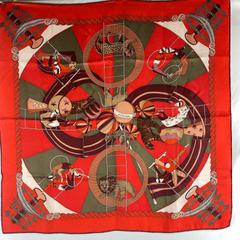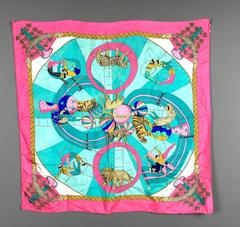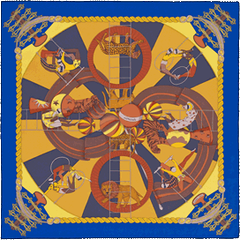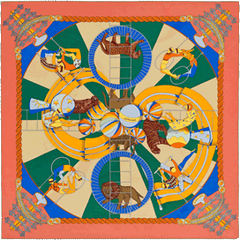Circus
Designed by Annie Faivre
First edition in 1983
Login or Register to get extra informations (rarity, sku, original prices ...)
Behind the scenes at circus, the Ringmaster has yet to don his impeccable, frogged jacket. Soon, he will introduce the artists and their turns, to the blast of trumpets and the clashing of cymbals. Soon, he will bandy words with the clown, ever ready to spread chaos and laughter. But for now, it’s time to train. Men and animals are hard at work. Lions and panthers practice pacing to the rhythm of the band, on the giant wheel; trapeze artists prepare to launch into mid-air; tigers balance on huge balls, and acrobats arch and turn through their hoops. The modern circus has its roots in the equestrian shows of the eighteenth century. Englishman Philip Astley brought his travelling show to the Faubourg du Temple, in Paris. The Franconi family followed soon after. Little by little, large horse rings were replaced by smaller spaces for jugglers, acrobats and clowns. The first circus menageries appeared in the late nineteenth century. Live circus is a demanding discipline that has evolved over time as an arena for innovation and new ideas, pushing back the boundaries of physical performance and entertainment, combined.
Behind the scenes at circus, the Ringmaster has yet to don his impeccable, frogged jacket. Soon, he will introduce the artists and their turns, to the blast of trumpets and the clashing of cymbals. Soon, he will bandy words with the clown, ever ready to spread chaos and laughter. But for now, it’s time to train. Men and animals are hard at work. Lions and panthers practice pacing to the rhythm of the band, on the giant wheel; trapeze artists prepare to launch into mid-air; tigers balance on huge balls, and acrobats arch and turn through their hoops. The modern circus has its roots in the equestrian shows of the eighteenth century. Englishman Philip Astley brought his travelling show to the Faubourg du Temple, in Paris. The Franconi family followed soon after. Little by little, large horse rings were replaced by smaller spaces for jugglers, acrobats and clowns. The first circus menageries appeared in the late nineteenth century. Live circus is a demanding discipline that has evolved over time as an arena for innovation and new ideas, pushing back the boundaries of physical performance and entertainment, combined.
Help us enhance Scarf Sage Hermès scarf collection by contributing additional information or higher quality images.






